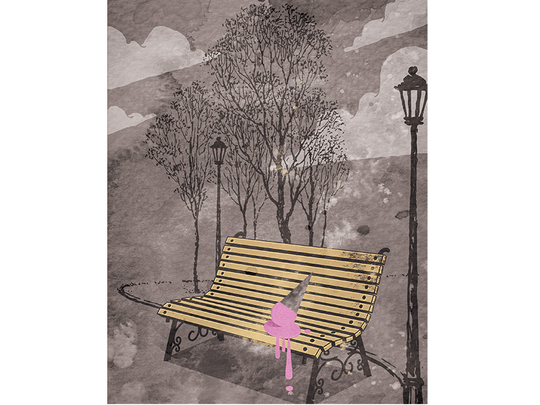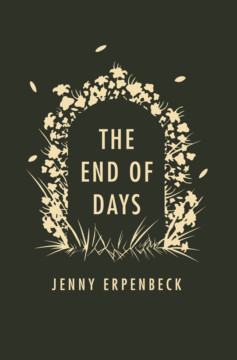
The End of Days
By Jenny Erpenbeck, translated by Susan Bernofsky, New Directions, 239 pages, $23.95
Whether we like it or not, all of us know that we are born to die. But while death is the great, inescapable conclusion, how it arrives is quite another matter. A stair taken with the wrong foot, the decision to avoid an icy patch of street, the random creak of a window frame — each of these seemingly minute factors determines a woman’s fate in Jenny Erpenbeck’s “The End of Days”.
This masterful novel from the acclaimed German author of “Visitation” (2010) plays with an intricate web of possible outcomes to draw broader conclusions about the meaning of our lives and stories.
The narrative is broken into five sections, each of which unfolds a chapter of the central character’s life and is punctuated by a possible end to it. She first appears as a baby, born to a Jewish woman in a Galician town. Found dead in the cradle, she is mourned by a mother who must learn that “a day on which a life comes to an end is still far from being the end of days”.
But then comes the first intermezzo — an interlude of a few pages, which follows each section. In these, Erpenbeck reverses the fate we have just witnessed, offering a counterfactual history. What if a handful of snow revived the baby? A life would be saved, at least for now, allowing her story to continue.
In the second section the baby has grown into a teenager in 1919 Vienna, young, lovelorn and eking out a living with her family until an evening’s events bring about another downfall. A third twist makes her a communist facing arrest in Moscow, before her next incarnation as a successful writer in Berlin and finally as an age-addled nonagenarian. What, we ask ourselves, does a reprieve of 90 years ultimately mean?
This is a beautifully written novel, impressively translated from the German by Susan Bernofsky. But it is not easy on the reader. Erpenbeck’s tautly constructed and fast-moving narrative challenges you to keep track of precisely what is happening to whom and where. Her refusal to name her characters for most of the book makes things still more discombobulating.
In the background the relentless horrors of 20th-century European history march on, etching their toll on those forced to live through it: “the secession of Hungary, say, might result in a pair of lips bitten raw”. The fates of these abstracted individuals effectively demonstrate our powerlessness in the face of larger events.
While the mood is one of desolation, bleakness is redeemed by Erpenbeck’s eye for the human in our relationships. Her mothers and daughters echo each other, reject each other, become each other. She also has great command of the telling detail. In one scene, among the chaos of immigrants waiting at Ellis Island, “a boy, having been given an ice-cream by a relative who got permission to visit him, places the ice-cream on the bench, and there it melts, because the boy doesn’t know what ice-cream is”.
As the people in this story scatter far and wide, we see how the stories that make us also die. Even the most horrific episodes of personal history — in this case a violently anti-Semitic attack that echoes through the book — can be quickly hidden and forgotten. Towards the end, the son of the central character visits Vienna. “He carries around within him a vast dark land: all the stories his mother never told him or that she hid from him; perhaps he carries with him even those stories his mother never knew or heard of.”
A set of Goethe’s books in an antique store appeals to him but he has no idea of the critical role these very volumes played in his ancestry. So he leaves them on the shelves, another connection to his past lost.
This is not a linear novel. We are always aware of the alternative lives, the possible deaths, the road not taken. At one point, the heroine’s fate is shuffled around in papers on a desk — the left pile and she dies, the right pile and she lives. Such randomness is shocking. But as the main character muses about her entrance to the underworld: “Some death or other will eventually be her death. If not sooner, then later. Some entrance will have to be for her. Every last person, every he and every she, has an entrance meant for him, for her”.
“The End of Days” is a compelling reminder that worrying about the unknowable will do nothing to delay the inevitable.
Financial Times










